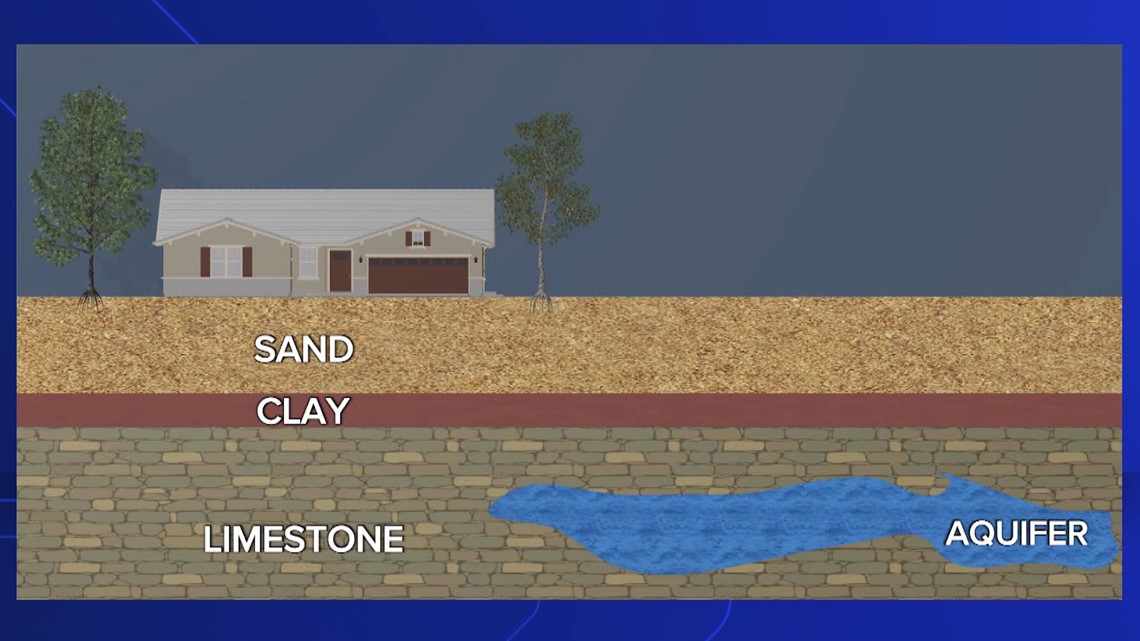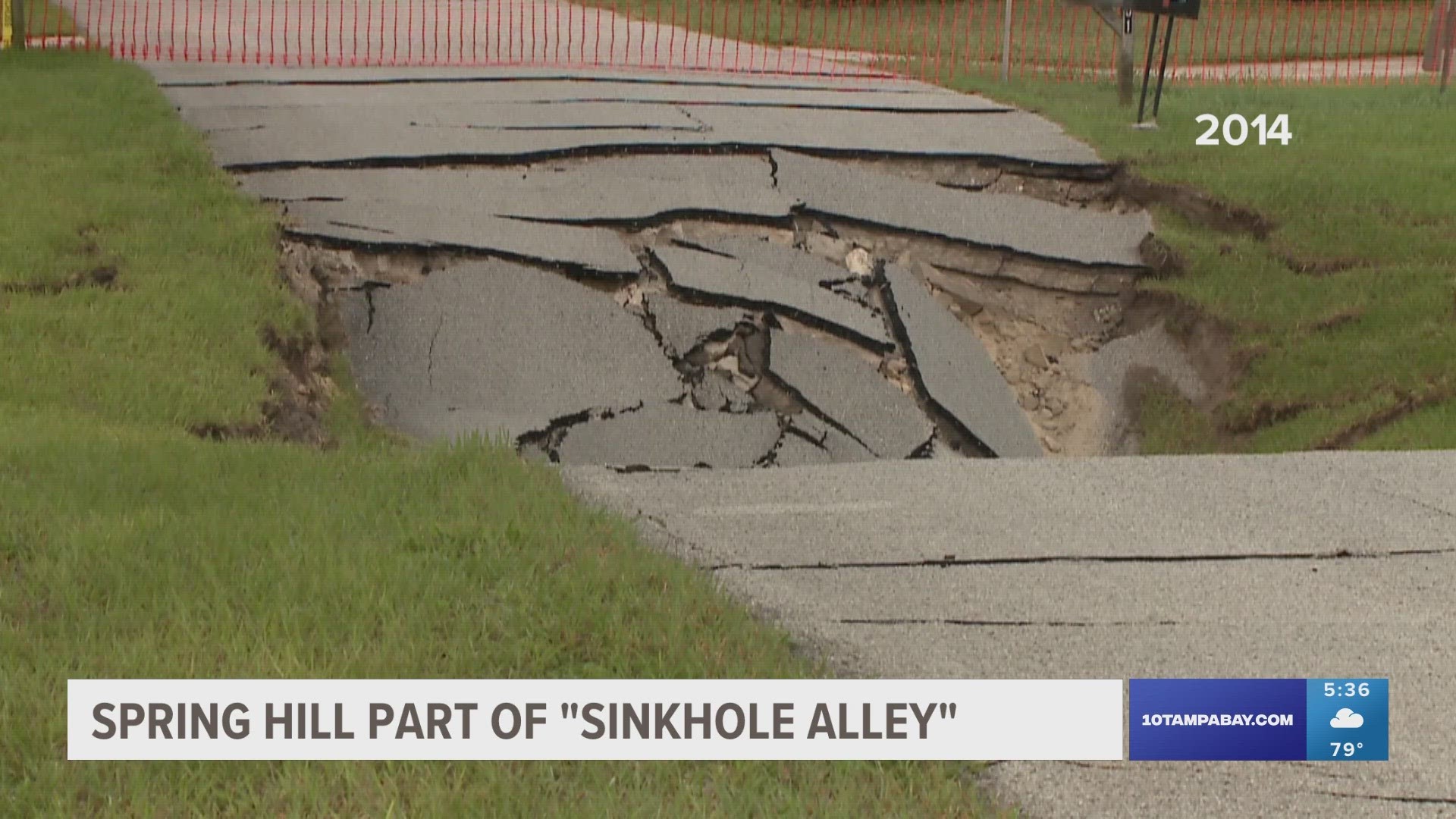SPRING HILL, Fla. — Parts of Tampa Bay fall into what is known as "sinkhole alley." It's an area that is prone to developing sinkholes.
In Hernando County, Spring Hill is No. 1 in the nation for verified sinkholes. Some sinkholes are large which is when they can become a danger to homes and the people living in them.
Back in 2014, one family remembers their home that was nearly swallowed by a sinkhole in Spring Hill.
"They condemned the house immediately," Michelle Parisik said.
Parisik's mother, who has since passed, was living in a home along Eldridge Road and Van Allen Way. Ten years ago, a sinkhole opened right in front her home. The sinkhole sent a crack throughout the house and Parisik's mom was given 48 hours to move out due to safety concerns.
Parisik recalls how scary the situation was.
"Until you see something like that, you’re just mind blown. The whole house could’ve fallen in," Parisik said.
Officials measured the sinkhole at 30 feet deep and 105 feet wide. Four houses were forced to evacuate at the time.
In Spring Hill, sinkholes are reported more often than in other parts of the state. Experts explained it’s because of what’s beneath the concrete.
"If you consider the surface of our land in Florida as a layer cake," an adjunct professor at USF, Nicholas Albergo, said.


Albergo is an expert in the industry as he founded an engineering firm years ago. He explained that within Florida's layers, there is dirt, clay and limestone.
"This limestone over time will deteriorate," Albergo added. That creates an environment for sinkholes to form.
"The reality is places like Spring Hill became very famous for investigations of sinkholes," Albergo added.
Before 2011, insurance laws were different and claims were written for sinkhole-like conditions.
"If the property was investigated and through drilling you were able to identify these holes or these caves in the limestone, that would be proof of sinkhole-like conditions. As a result, people that put in insurance claims would get paid," Albergo said.
USF researchers found that over the past two decades, there have been tens of thousands of subsidence-related insurance claims.
"Oftentimes, claims were paid where there was no sinkhole at all," Albergo stated.
That's why in 2011, the law changed. It changed again in 2016.
"Over the last 15 years or so, the laws have changed. Now, if you want to put in a claim, not only do you have to have sinkhole insurance, but you have to demonstrate that you have structural damage to your building, the result of a sinkhole," Albergo explained.
For those in Spring Hill, sinkholes are part of the lay of the land. Parisik finds it incredible that 10 years later, a person would never be able to tell there was a sinkhole where her mom lived.
"The road doesn’t look any different. The yard doesn’t look any different," Parisik explained.
With that, experts recommend a person should do their research if they are looking to buy a home in an area that is prone to sinkholes. One of the best ways to know if a property has had a sinkhole in the past is to research online or talk to neighbors.
A person can also hire a geotechnical engineer to survey the land to see what the risk is of experiencing a sinkhole.

